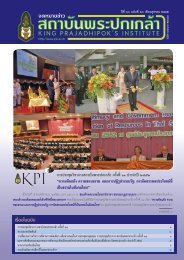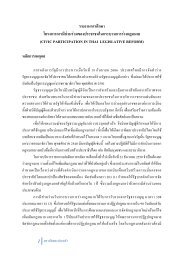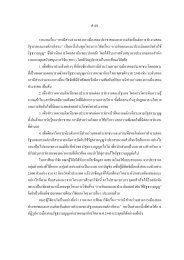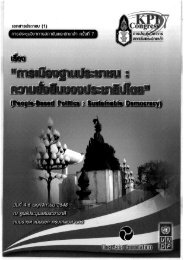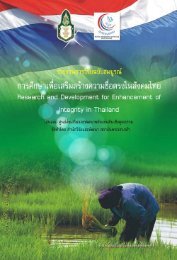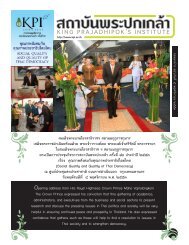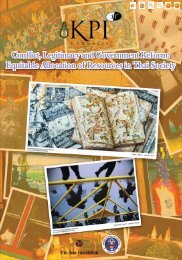SUFFiciENcy EcONOMy ANd GRASSROOtS DEvElOPMENt
SUFFiciENcy EcONOMy ANd GRASSROOtS DEvElOPMENt
SUFFiciENcy EcONOMy ANd GRASSROOtS DEvElOPMENt
You also want an ePaper? Increase the reach of your titles
YUMPU automatically turns print PDFs into web optimized ePapers that Google loves.
280<br />
The Meaning of Sufficiency Economy <br />
International Conference<br />
ineffective, the appalling conditions in which the bulk of the population continued to<br />
live and the necessity to address their problems seriously came into sharp relief. The<br />
late Ram Manohar Lohia dramatized it by calling attention of parliament to the fact<br />
that more than half the population subsisted on less than 6 annas per head per day.<br />
In 1962, an unofficial seminar,’ in which several leading economists, political<br />
figures and social activists participated, gave a fresh impetus to the idea that<br />
planning should aim at ensuring a minimum standard of living to every one within a<br />
reasonable period. They suggested that the national minimum should include a timebound<br />
target of minimum income (Rs.20 per capita per month in rural areas and<br />
about Rs.25 in urban areas); expenditure on education and health to be provided by<br />
the state according to the Constitution2 transfers and social welfare expenditure to<br />
ensure minimum for the poorest 20 per cent of the population who are not likely, for<br />
various reasons, to benefit ^automatically from growth. <br />
Soon thereafter the implications of planning for this minimum living were<br />
worked out in a paper prepared by the perspective planning division of the Planning<br />
Commission and further elaborated entitled “Notes on Perspectives of Development<br />
India’s 1960-61 to 1975-76” [GOl, PC, 1964]. The latter was considered but not<br />
formally approved by the Planning Commission. In the event, for a variety of<br />
reasons (including Nehru’s death, the aftermath of military engagements with China<br />
and Pakistan, and the droughts) it was shelved. The Fourth Five-Year Plan did not<br />
even mentioned minimum living standards or basic needs.<br />
<br />
Rural Poverty and Development Policy<br />
The late 1960s witnessed a spurt of interest among economists in the study of<br />
poverty both at the conceptual and empirical levels. At the conceptual level,<br />
questions began to be raised about the validity of using per capita GDP or per capita<br />
consumption as a satisfactory measure of well-being. A strong case was made for a<br />
much broader concept of ‘quality of life’ which would include nutritional status<br />
agency and literacy. Attention was also focused on the possibility - h on the example<br />
of Kerala in India and Sri Lanka - that the quality of IT in the broader sense is not<br />
necessarily contingent on high level income. The factors - largely social and<br />
political - which made the’ possible have attracted much attention and discussion<br />
[United Nations 1975; Sen 1981; Bhalla 1988; Streeten and Burki 1978]. <br />
The findings of the Mahalanobis Committee [Gol, PC 1964, 19591 and<br />
Hazari’s study (1967), as is well known, found no reduction in inequalities in<br />
consumption, incomes or in concentration of economic power. A number of<br />
researchers took up empirical and theoretical studies focused on absolute poverty<br />
and strategies to eradicate it. Dandekar and Rath’s (1974) well known monograph<br />
‘Poverty in India’ argued for defining the poverty line on the basis of the minimum<br />
income required for nutritional diet and other essentials, provided estimates of the<br />
number of people who fell below this line, and outlined a strategy (based on a



